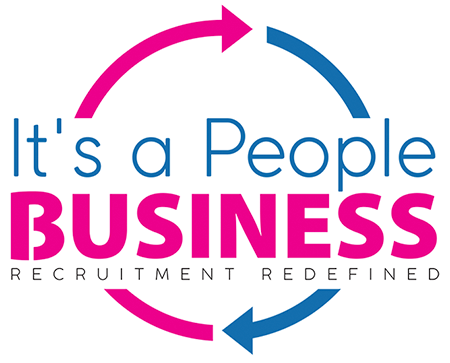
Building a strong employer brand is not a simple task, but with the right strategies and tips, it can be made easier. It can be overwhelming to know where to start, so it is important to take the time to understand the key strategies and tips that will help you build an effective employer brand. In this blog post, we will discuss the importance of employer branding and provide key strategies and tips you can use to build a strong employer brand. We will discuss the impact employer branding has on employee engagement, recruitment, and retention, as well as the importance of consistency and authenticity in your employer branding efforts. We will also provide tips on how to measure the success of your employer branding efforts. By the end of
1. Clarify your company mission and values
1. Clarify your company mission and values

The first and most important step in building a Strong Employer Brand is to clarify your company mission and values. These should be reflected in the way you interact with employees, the culture you foster, and the way you communicate your values to the world. Your mission and values will be the foundation of your employer brand and should be reflected in every aspect of your business. Because of this, it’s important to spend time properly defining your mission and values, and making sure they are consistent across all communication channels. Taking the time to do this will help ensure that your employer brand is strong and consistent.
Read More: The Benefits of Working with a Flat Fee Recruiter
2. Foster a positive work culture
2. Foster a positive work culture

Employer brand is one of the most important aspects of creating a successful business. It’s essential to build a positive work culture that sets your business apart from the competition. To foster a positive work culture, consider offering benefits that go beyond salary and bonuses. Offer flexible work schedules, work-from-home options, and other creative solutions that make your business a desirable place to work. Encourage employees to take initiative and collaborate on projects. Make sure everyone feels valued and appreciated and that their contributions are noticed. Investing in your employees is investing in the future of your business.
3. Invest in employer branding tools
3. Invest in employer branding tools
Investing in employer branding tools is a key part of building a strong employer brand. These tools allow you to showcase your company culture and values to potential hires and can be used to attract and retain top talent. Employer branding tools should include an online career portal, social media presence, recruitment marketing campaigns, employer review sites and more. Additionally, employer branding tools should be tailored to the target audience and updated regularly to ensure accuracy. Companies that invest in employer branding tools are well-positioned to achieve their recruitment goals.
4. Develop an employee referral program
4. Develop an employee referral program

An employee referral program is an effective way to bring in qualified candidates. This type of program gives employees the opportunity to refer their friends, family members, and colleagues for open positions in the company. By incentivizing employees to refer qualified candidates, you can both increase the number of potential candidates and ensure that employees feel valued for helping the company find the right fit. Additionally, it can help to ensure a more diverse and inclusive hiring pool. To get the most out of an employee referral program, make sure to clearly define the roles that employees can refer for, provide rewards for those who refer successful hires, and create a streamlined process for employees to refer candidates.
Read More: Managing Staffing Challenges in the Modern Workplace
5. Leverage social media to promote your brand
5. Leverage social media to promote your brand
Social media is one of the most powerful tools you can use to promote your employer brand. Leveraging social media can allow you to reach potential employees quickly and cost-effectively. Moreover, it allows you to start meaningful conversations with potential candidates that can lead to more lasting and meaningful relationships. You can use social media platforms such as Twitter, LinkedIn, and Facebook to post job openings, create company profiles, and share updates about your organisation. Additionally, you can use them to engage with potential candidates and build relationships that will help you find and hire the best talent.
6. Engage in employee recognition programs
6. Engage in employee recognition programs

Employee recognition is a powerful tool to build a strong employer brand. Acknowledging and recognising employees’ efforts and successes not only boosts morale and motivation, but also helps to create a positive and productive work environment. By recognising the hard work and dedication of your employees, you can create a culture of excellence that will reflect well on your company’s reputation. Consider implementing a reward system for employees, such as offering gift cards, bonuses, and public recognition. This will show your employees that their hard work is appreciated and valued.
Read More: Navigating the UK Job Market: Insights and Strategies
7. Ensure that job descriptions are accurate and engaging
7. Ensure that job descriptions are accurate and engaging
It is essential to create job descriptions that accurately reflect the position’s duties, responsibilities, and qualifications. This will help ensure that you get a pool of high-quality applicants who meet your expectations. Additionally, job descriptions should be written in a way that is engaging and will capture the attention of potential job seekers. Make sure that the descriptions are well-formatted, contain the right keywords, and include an enticing summary of the position. Be sure to provide potential applicants with clear information about the job and what is expected of them. Finally, end the description with a call to action that encourages applicants to apply.
8. Collect feedback from current employees regularly
8. Collect feedback from current employees regularly

Gathering feedback from current employees is one of the most important steps when building a strong employer brand. When employers solicit regular feedback from their staff, they can better understand how their employees view the company and its workplace environment. This provides invaluable insights that can be used to identify any areas needing improvement and to create strategies to meet employee needs. Additionally, regularly collecting feedback from employees helps demonstrate that the company values their input and is dedicated to creating an engaging and rewarding work culture.
In conclusion, building a strong employer brand is essential for attracting and retaining top talent. It involves creating a unique and engaging recruitment process, developing a compelling employer value proposition, and creating an environment where employees can grow. By taking the time to invest in your employer brand, you can create a company culture that is both attractive to potential candidates and motivating for existing employees. Doing so will help ensure your organisation's long-term success.
